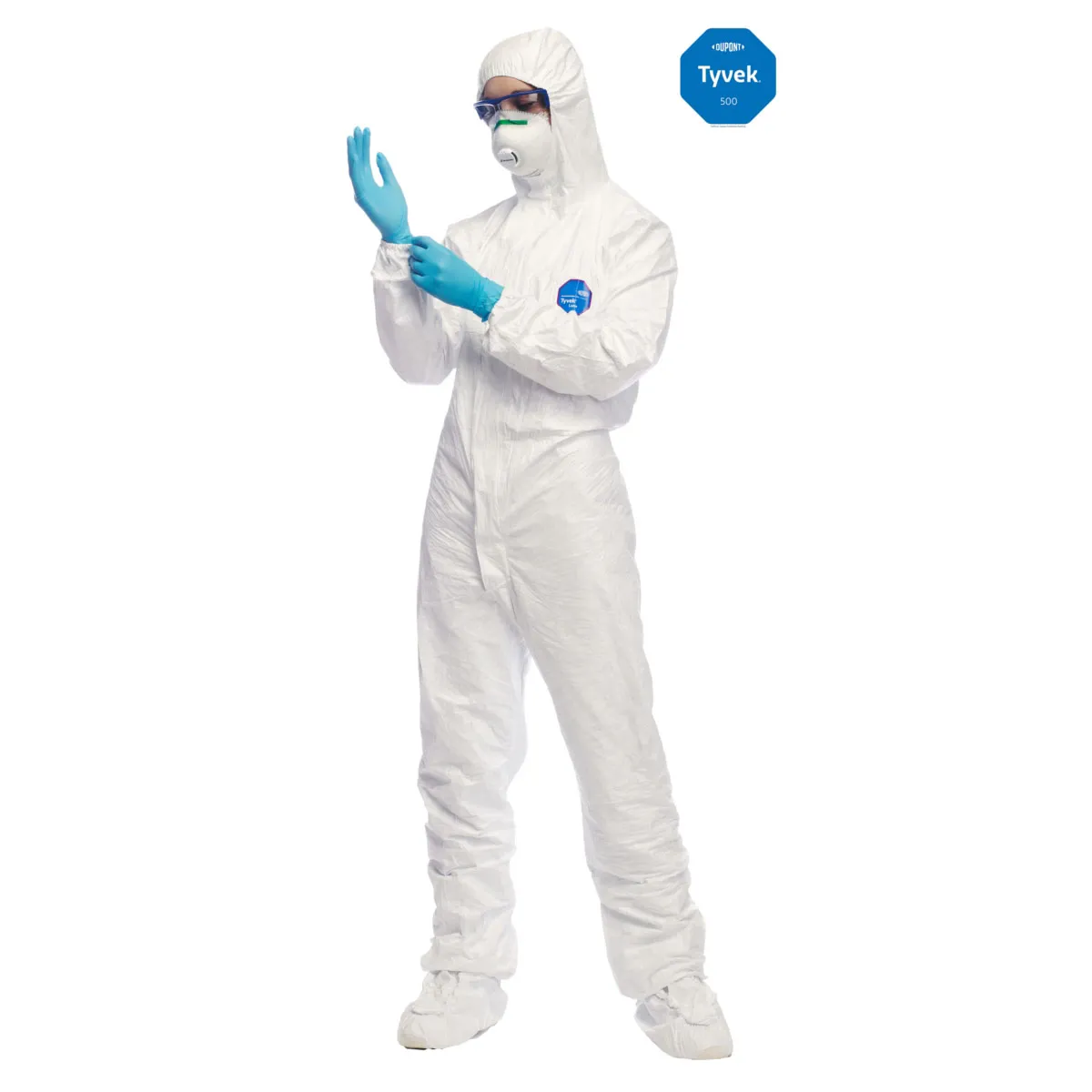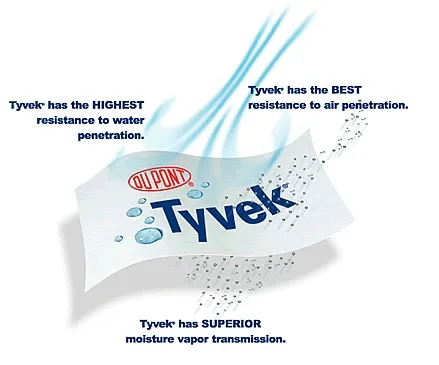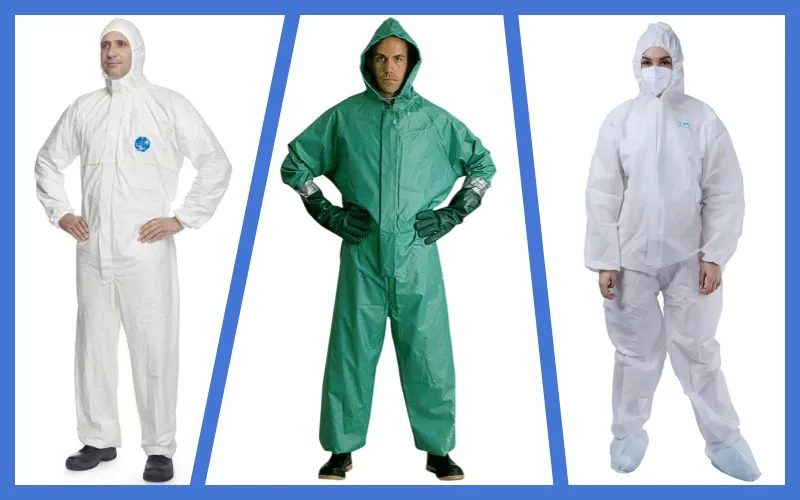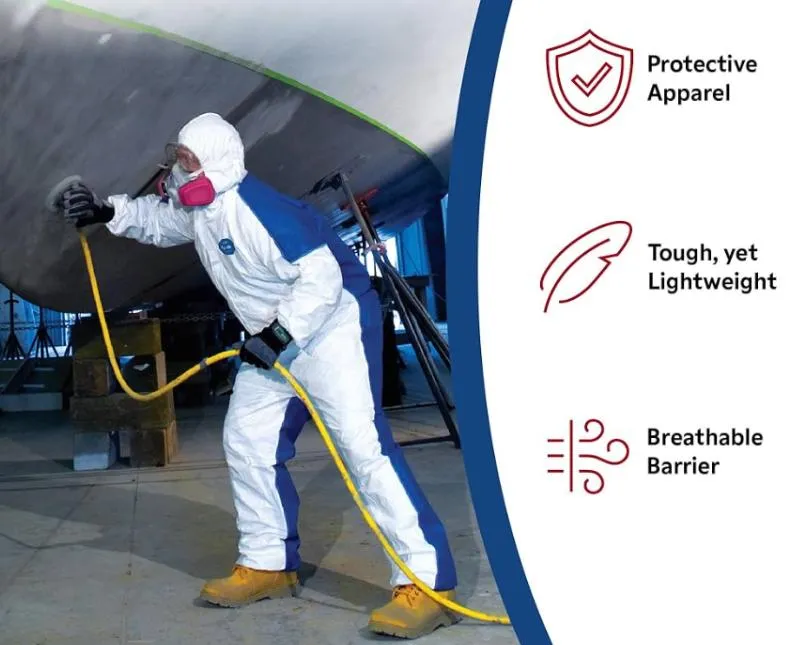Ever put on a Tyvek suit, stared at the mirror, and wondered, “Is this thing really waterproof or just hype?” If you’ve ever faced a splash of water or a chemical and thought, “Am I going to soak through this suit or not?” then you’re in the right place. I’ve spent plenty of time in protective gear, gotten drenched, stayed dry, and learned the hard way what Tyvek suits really do—and don’t do—when it comes to water resistance. Today, I want to share everything about Tyvek suits’ waterproof power, their limits, the best ways to stay dry, and how to pick the gear that’s just right for your job.
By the time you finish this, you’ll understand Tyvek in depth and get practical advice you won’t find in a brochure. Let’s jump in!
Why Is Waterproofing Important for Tyvek Suits? The Real Need
If you work around liquids—like pesticides, paint, hazardous waste, or dusty environments—you know how crucial it is to stay dry and protected. Water or chemicals slipping through your suit pose safety risks and gross discomfort. So, getting the right disposable suit isn’t just about ticking a box—it’s a health and performance issue.
But here’s where it gets tricky: many people, myself included, used to think all these white protective suits were just waterproof. Nope. Tyvek is something different—a clever middle ground between heavy rain gear and flimsy plastic aprons. People often ask, “Can I wear it in the rain or if I accidentally splash a lot of liquids?” The honest answer? It depends.
Water-Resistant vs. Waterproof—What’s the Difference?
Before digging deeper, let’s clear up some terms. A water-resistant suit blocks light splashes and drips temporarily; a waterproof suit keeps you dry no matter what (think scuba suits). Tyvek falls into the water-resistant camp but has unique properties that make it special.
Tyvek is built to:
- Stop small droplets and particles.
- Let sweat vapor escape so you don’t overheat.
- Be lightweight and breathable for longer use.
But it won’t shield you indefinitely if water pools or you stay in wet conditions for hours.
What’s Tyvek Made Of?
Tyvek is a trademarked material by DuPont, made of high-density polyethylene fibers spun tightly. Imagine an ultra-fine, durable fabric that looks like a soft sheet but acts like a shield against dirt and liquid.
- The fibers are so densely packed that they create a barrier.
- But there’s enough breathability to allow air and moisture to get out.
- This combo means Tyvek is not a plastic raincoat—better for many tasks, worse for puddle sitting.
I once tested spraying a watery adhesive while wearing Tyvek. The glue splattered but mostly stayed on the suit’s surface. I stayed clean and dry for hours, which says a lot about how well it resists liquids in real-world scenarios.
Personal Story Time: When Tyvek Suits Passed and When They Flopped
You want facts sprinkled with stories? Here’s one from my own toolbox.
Last fall, I worked on a hazardous waste cleanup. The site was muddy, with lots of liquid spills. I chose my usual Tyvek suit because it’s easy to move in and keeps dust out. For paint spraying, no sweat, the suit handled splashes well.
But… when heavy rain hit and I had to walk across wet terrain for 45 minutes, my legs got damp. Not soaked through, but definitely uncomfortable. That taught me this: Tyvek is great for protection against liquid splatters but lousy for walking through soaking wet environments without an extra layer.
Tyvek Suits vs. Other Protective Suit Materials
One way to truly understand a disposable Tyvek suit’s waterproof powers is to compare it with other common suits. Check this out:
| Feature | Tyvek Suit | PVC or Rubber Suit | Disposable Polypropylene Suit |
|---|---|---|---|
| Liquid Protection | Water-resistant, splash-proof | Fully waterproof | Minimal water resistance |
| Breathability | High, keeps you cooler | Low, traps sweat | Moderate, less breathable |
| Comfort & Weight | Lightweight and flexible | Heavy and rigid | Lightweight but fragile |
| Durability | Good for tough jobs | Extremely durable | Low durability |
| Ideal Use | Light splashes, dust, chemicals | Heavy liquid exposure and immersion | Dust, minimal liquid |
| Average Cost | Mid-range | High | Low |
If your day-to-day involves dust, paint overspray, or chemical splashes, Tyvek’s the winner. But if you’re knee-deep in water or hazardous spills, PVC or rubber will keep you dry and safe.
How to Spot Quality Tyvek Suits That Won’t Let You Down
Here’s a pro tip from my shopping experience: not all Tyvek suits are equal! The market’s flooded with cheap imitations that miss the mark on water resistance.
Look for these to get the real deal:
-
Certifications: Make sure the suit meets standards like EN 14126 or ASTM F1670/F1671 for liquid resistance.
-
Tape-sealed seams: Some cheaper suits skip this, and water sneaks through stitching holes.
-
Brand reputation: DuPont Tyvek or other trusted manufacturers produce higher-quality suits.
-
Fabric weight: Heavier Tyvek models offer better splash resistance (think of the thicker nonwoven “armor”).
I once bought an off-brand suit that felt flimsy and wet after 10 minutes in the dew. Lesson: invest wisely or risk getting soaked.
Overview of Common Tyvek Suit Models
| Model | Protection Level | Features | Typical Use Cases |
|---|---|---|---|
| Tyvek 400 | Type 5/6 (particulate, splash) | Breathable, elastic wrists/ankles, and friction soles option | Spray painting, general maintenance |
| Tyvek 600 | Type 5-B/6-B (low concentration liquid, particles) | Sewn-taped seams, elasticated face/wrists/ankles | Pharma labs, cleaning, disinfection |
| Tyvek 800 | Type 4 (liquid tight) | Liquid-tight, withstands pressurized jets | Industrial cleaning, waste treatment |
| Classic Xpert (CHF5) | Type 5-B/6-B particle filter | Hooded, elasticated, snug fit | Hazardous dust, asbestos removal |
| Classic Plus (CHA5a) | Type 4-B/5-B/6-B (liquid & particles) | Stitched and taped seams, self-adhesive chin flap | High-risk contamination work |
How to Spot Quality Tyvek Suits?
Want to squeeze every drop of performance from your Dupont Tyvek suit? I tested these water-resistance boosters myself, and they really helped:
- Layer Up: Wear a lightweight rain jacket or waterproof shell over Tyvek in heavy rain or heavy splash zones.
- Avoid Wet Surfaces: Sitting or leaning in puddles spreads water through seams.
- Speedy Dry Time: Hang your suit away from sunlight after work—mold and moisture weaken fabric.
- Seam Sealing: Apply seam tape or liquid sealer for an extra-tight barrier.
- Inspect and Replace Often: Signs of wear, like tears or thinning fabric, are invitations to leaks.
I use these tips during mud-heavy cleanup jobs and keep my gear dry as a bone.
What Does Science Say About Tyvek and Its Waterproofing?
DuPont’s official Tyvek data sheet calls it a “protective barrier fabric” that offers protection against dust, airborne particles, and light liquid splash penetration, but it’s not for prolonged liquid exposure or pressurized spray environments (DuPont, 2023).
Data from Statista shows many industrial users prefer Tyvek for jobs needing comfort and splash resistance, while heavy liquid environments call for specialized rubberized suits. OSHA’s guidelines back this by recommending Tyvek for splash hazards, but stronger gear where liquid penetration risk increases.
This scientific backing confirms what I’ve felt firsthand on the ground.
Choosing the Right Protective Gear for Your Job: My Simple Guide
Here’s a real quick decision cheat sheet I use before protective suit shopping:
-
Will you face mostly dust, paint overspray, or light chemical splashes?
→ Tyvek is your go-to. -
Are you exposed to heavy rain, chemical spills, or puddles capable of soaking you?
→ Upgrade to PVC or rubber suits. -
Need to stay cool and mobile for hours at a time?
→ Tyvek’s breathability can’t be beat.
Knowing this saved me a ton of wasted money and soggy days.
Extra Advice: Extending Your Tyvek Suit’s Life and Performance
Beyond water resistance, you want your Tyvek suit to be durable and reliable. Here are some extras I learned:
-
Store suits flat or hung to avoid creases that weaken fabric.
-
Avoid harsh detergents when washing reusable types.
-
Keep nails, sharp tools, and rough surfaces away from the suit.
-
Always wear gloves and boots suited for the environment to complement the suit’s protection.
These simple habits kept my suits in tip-top shape and saved me from last-minute gear failures.
How Tyvek Handles Different Liquids: Beyond Water
You might wonder, “Ok, but what about chemicals or oil spills? Does Tyvek block those, too?” Great question! Tyvek’s liquid barrier performance varies by the type of liquid:
-
Water and water-based liquids: The suit generally resists splashes well but isn’t perfect for soaking or submersion, as we discussed.
-
Oils and solvents: Some small amounts can bead up, but certain chemicals can degrade Tyvek. It’s not chemical-proof.
-
Biohazard fluids: Many hospital-grade Tyvek suits are tested for bloodborne pathogens and liquid penetration resistance, but for bigger spills, specialized gear is better.
I once handled a small oil leak wearing Tyvek. Quick splash? No problem. But after 10 minutes of exposure, the fabric started to lose integrity—no bueno.
Using Tyvek with the correct knowledge helps you avoid costly mistakes and health hazards.
Breathability: Why It Makes Tyvek Cool
One of Tyvek coveralls‘ best features is breathability. Sounds technical, but it means you won’t sweat buckets inside—important when you’re working long hours in tough jobs. Unlike fully waterproof rubber suits that trap heat and moisture, Tyvek balances protection with comfort.
From experience, this breathability turned a day-long cleanup from a miserable sweat-fest into a bearable one. So yes, Tyvek keeps you dry from outside droplets but also helps sweat escape, so you don’t overheat.
Cleaning and Reusing Tyvek Suits: What You Need to Know
Most Tyvek suits are disposable, but some are reusable with proper care. If you want to squeeze more life out of yours:
-
Avoid washing with harsh chemicals or bleaches.
-
Brush off dust and dirt gently—don’t scrub or wring.
-
Dry thoroughly before storage.
-
Inspect seams and fabric for damage regularly.
I prefer a fresh suit for hazardous jobs, but for less critical tasks, these care tips worked well for me and my coworkers.
Final Thoughts: Tyvek Suits Are Water-Resistant Heroes, Not Waterproof Tanks
So, let’s be real: Tyvek coverall suits aren’t fully waterproof. They resist light splashes and particles brilliantly, and–thanks to breathability–make tough jobs comfortable. But if you’re wading through wet, messy, or hard-to-dry environments, layer smart or pick tungsten-level PVC suits.
As a user, I’ve tested Tyvek endlessly—sometimes it kept me dry under splashes and dust, other times it let water creep in if I ignored basic wet-environment rules. Buy quality, maintain your gear, add an outer shell for heavy liquids, and you’ll go far.
Grab my free checklist below to pick the right protective gear for your needs! Got tips or stories about your Tyvek suit adventures? Hit the comments—I’m always up for sharing real talk. And don’t forget to share this post with your crew so nobody has to lose battles with wet suits again!




